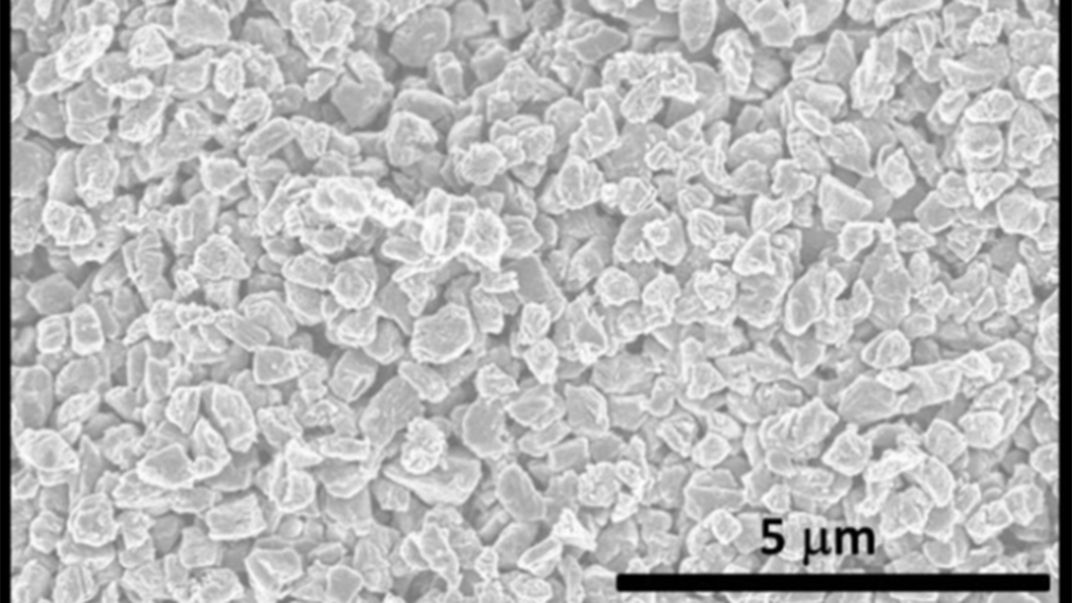Weird New Type of Carbon Is Harder (and Brighter) Than Diamond
Dubbed Q-carbon, the material is magnetic, emits a soft glow and can be used to grow diamonds faster and cheaper than ever before
/https://tf-cmsv2-smithsonianmag-media.s3.amazonaws.com/filer/3e/a3/3ea3c277-6a2c-43d5-b750-6e75b0a3e4a4/42-19762044.jpg)
Diamonds are hard to make. They form in Earth’s upper mantle, roughly a hundred miles below the surface, under skull-crushing pressures and rock-melting temperatures. Though replicating these conditions in the lab is becoming commonplace, the equipment to do it is expensive and the process can take days to weeks.
Now, after decades of testing, a team from North Carolina State University has discovered a speedy way to make diamonds that can be done without squeezing carbon under extreme pressure or heating it with conventional baking.
“Converting carbon to diamond has been a cherished goal for scientists all over the world for the longest time,” says Jagdish Narayan, lead author of the paper published this week in the Journal of Applied Physics.
Amazingly, in the process of crafting their diamonds, Narayan and his team also discovered a new phase of carbon, dubbed Q-carbon. This bizarre material is even tougher than diamond, is magnetic and emits a soft glow. Aside from its role in making faster, cheaper diamonds, Q-carbon could find uses in electronic displays and may aid our understanding of magnetism on other planets.
Changing carbon into diamond requires an enormous amount of energy, which is why they were previously thought to form only under high pressures and temperatures, explains geophysicist Rebecca Fischer, a postdoctoral fellow at the Smithsonian's National Museum of Natural History who was not involved in the research.
But according to Narayan, it’s all in the speed. “Through the fast process we can essentially fool Mother Nature,” he says.
Under regular room pressure, the team exposed amorphous carbon, which lacks any crystal structure, to extremely short laser pulses. This heated the carbon up to roughly 6,740 degrees Fahrenheit—as a comparison, the surface of the sun is around 10,000 degrees Fahrenheit.
The puddle of melted carbon was then rapidly cooled, or quenched, to form the tough new Q-carbon.
Other versions of carbon display vastly different properties—like soft, opaque graphite versus hard, sparkly diamonds—and Q-carbon is no exception. When the carbon melts, for instance, the bonds between atoms shorten and don't have time to lengthen again as the material suddenly cools down. That makes the finished product denser and harder than diamond.
Even more exciting is that Q-carbon is magnetic at room temperatures—one of the few magnetic carbon materials ever produced. And because of its specific atomic arrangement, the material emits small amounts of light. These properties could make Q-carbon extremely valuable for future electronic applications.
Its more immediate use, though, is aiding diamond creation. By slightly changing the rates at which the molten carbon cools, the scientists can use it to grow crystals of diamonds in a bunch of forms, such as nanoneedles, microneedles, nanodots and films, explains Narayan.

The process is inexpensive, in part because it uses a laser that is already popular for laser eye surgeries. In addition, the method grows diamonds in a matter of nanoseconds.
“We can make a carat in about 15 minutes,” says Narayan.
Right now, the diamonds are small—the largest is roughly 70 microns wide, or roughly the width of a human hair, according to Narayan. But he is confident the process can be scaled up. At this point the main limit to gem size is the laser, he says, and wider beam could make bigger diamonds.
But rather than producing a large gem, the method is probably most promising for mass production of smaller sparklers, says Fischer.
Tiny diamonds are useful in a variety of fields, including electronics, medicine and abrasives, explains physicist Keal Byrne, also a postdoctoral fellow at the natural history museum. “Having a new way to create [diamonds]—especially one that avoids a lot of the infrastructure of the old methods—is great,” says Byrne.
The team is now focused on understanding the intriguing properties of the Q-carbon, even suggesting that it could help explain the magnetic fields of other planets that don't appear to have active dynamos.
But there is much more to learn before we can start putting those kinds of theories to the test, Byrne says: “It’s a really interesting discovery. [But] what comes from it—now that is the interesting part."
/https://tf-cmsv2-smithsonianmag-media.s3.amazonaws.com/accounts/headshot/Wei-Haas_Maya_Headshot-v2.png)
/https://tf-cmsv2-smithsonianmag-media.s3.amazonaws.com/accounts/headshot/Wei-Haas_Maya_Headshot-v2.png)